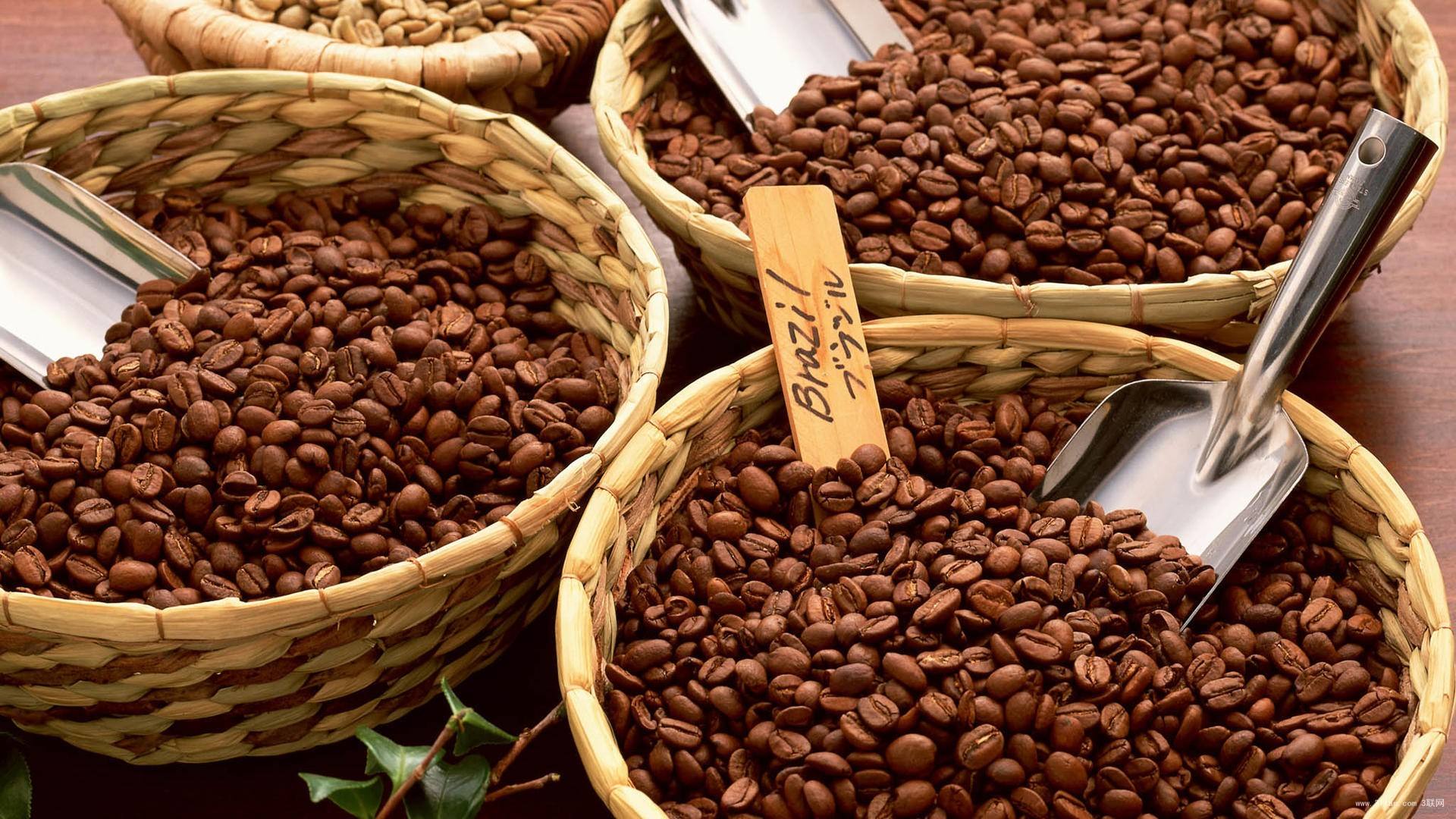Popular science | genealogy of common varieties of coffee

For professional baristas, please follow the coffee workshop (Wechat official account cafe_style)
Noun interpretation
Make up lessons before introducing varieties of genealogy
Coffea / Coffee
The genus Coffee consists of more than 120 species, usually opposite leaves, evergreen shrubs or small trees with horizontal branches. Contains opposite species, one side is flat, and the other side has grooves (right! It's coffee beans! ). Tropical forests are the preferred habitat for most coffee plants. There are about 60 species of coffee plants in the world, of which only 25 species are cultivated to make coffee, of which only 4 species are used as commercial coffee: large fruit coffee (Coffea liberica), medium fruit coffee (Coffea canephora), small fruit coffee (Coffea arabica) and high yield coffee (Coffea dewevrei).
Coffea arabica
The Arabica species, as we often call it, originated in the forests of Ethiopia and southern Sudan, and is now a very famous coffee bean grown all over the world.
Coffea eugenioides
Native to the East African Plateau, including Congo, Rwanda, Uganda, Kenya and western Tanzania. Is one of the famous Arabica diploid parent species (Arabica's mother). Has a lower caffeine content than Arabica.
Coffea canephora
The plant class, called Robusta, was recorded in the genus Coffea more than 100 years after it was planted in Arabica. Another of Arabica's diploid parent species (Arabica's father). Originated in sub-Saharan West and Central Africa. Unlike Acarabica, it is largely an efficient cash crop with higher yields and higher caffeine.
Typica and Bourbon
The story of
Arabica species, native to and around Ethiopia, then entered neighboring Yemen and spread around the world through Yemen. Today's Typicas refers to a group developed from Yemen by Dutch or possibly Baba Budan monks to Java and its outlying islands. The Bourbon we are talking about today is a branch brought to Bourbon by the French.
Typica
Typica is a tall cultivated Arabica species that originated from Yemen to Java and began to spread on the island of Java in the early 18th century.
Its plant is very similar to what we call Java today, with bronze pointed leaves, large fruits and seeds, very low yield, and susceptibility to all major diseases and insect pests.
Typica cultivated variety
Java
Java, which has long fruits and bronzed young leaves, is believed to be a descendant of coffee introduced to Java from Yemen. The variety was first brought from Java to neighboring islands (Timor) and then to East Africa (Cameroon) and was planted in 1980. Introduced to Central America by CIRAD (International Center for Agricultural Research and Development). In Cameroon, this variety is known for its moderate yield and good resistance to coffee berry disease.
Maragogype
A mutant of Typica was first discovered in Brazil in 1870. The fruit is large, long and a little twisted, and the plant has long internodes and large leaves. The output is relatively low.
Kent
It is believed to be a tall Typica variety that appeared in the Kent/ Kent region of India. This variety has been widely cultivated in India since 1930. One of the varieties is called K7, which is more common in Kenya and is the best rust-resistant coffee bean variety.
Other items of coffee related to Typica/ iron pickup
Kona | Blue Mountain | Sumatra
Criollo | Arabigo | Pluma Hidalgo
Bergundal (Garundang) | San Ramon
San Bernardo (Pache) | Chickumalgur
Blawan Paumah | Sidikalang
K7 | K20 | BMJ | Guatemala
Pache Comum | Pache colis | Villalobos
Bourbon
It is a naturally cultivated species of Arabica that spread from Yemen to the French island of Bourbon (an island in the Indian Ocean east of Madagascar).
This variety generally has wider leaves, rounder fruits, stronger stems and more erect plants than Typica. The fruit may be red (Vermelho) or yellow (Amarelo) in different subgroups. But they are also vulnerable to all major diseases and insect pests.
Cultivated varieties of Bourbon
Bourbon Pointu / Laurina
A natural mutation of Bourbon, which originally appeared on the island of Reunion in Reunion/, was first recorded in 1947. The plant is short, showing the shape of a "Christmas tree". Compared with the original Bourbon varieties, the leaves, internodes and fruits are smaller. Compared with other Arabica varieties, they have lower caffeine content. More likely to suffer from leaf rust.
SL28
A tall variety selected and cultivated by the Scott laboratory in Kenya is considered by many to be the Bourbon type. Known for its relative drought tolerance, Ethiopia was introduced from Tanzania. With luxuriant growth, moderate yield and susceptibility to a variety of diseases and insect pests, it is most commonly grown in Zimbabwe.
SL34
A tall variety, also selected and bred by the Scott laboratory in Kenya, has no exact blood relationship, but is thought to be a pure Ethiopian variety, while others think it is a mutation of the Bourbon species. It is more resistant to diseases and insect pests than SL28, and still has high yield in extreme weather conditions such as drought. It has broad leaves and bronze fruit. It is one of the most widely cultivated major varieties in Kenya.
Tekisic
One grown by Bourbon in El Salvador. The fruit is small and the yield is low.
Villa Sarchi
A dwarf mutation of Bourbon found in Costa Rica in 1957 is susceptible to diseases and insect pests.
Pacas
A dwarf mutant of Bourbon was found in the Santa Ana region of El Salvador in 1949. The output is good at high elevations. It is a paternal variety of El Salvador hybrid Pacamara. Susceptible to diseases and insect pests.
Pacamara
A hybrid of Maragogype and Pacas in El Salvador. Susceptible to diseases and insect pests. Released in 1958, but genetically unstable, 10% to 12% will return to Pacas/ Pacas.
Caturra
A dwarf mutant of red bourbon. Found in Brazil in 1937, it is very high yield. The characteristics of leaves and fruits are similar to those of Bourbon varieties, which can produce red or yellow fruits. Susceptible to major diseases and insect pests.
Mocha / Mokka
The dwarf variant of Bourbon is genetically similar to bourbon. There are round fruits. It is believed to be named after the port of Mocha in Yemen, grew up in Yemen and was taken to Reunion/ Reunion Island.
Batian
A tall variety similar to SL28, released by the Kenyan Coffee Institute in 2010 for resistance to rust and berry disease. Obtained by backcross between SL28 and SL34. The young leaves are moderately purple to bronze.
Other coffee items related to Boourbon/ bourbon
French Mission | Yellow Bourbon | Red Bourbon
Orange Bourbon | Pink Bourbon | Mibirizi
Mayaguez | Bourbon Chocola | Semperflorens
Arusha | Ivairi | Cera | Jackson
Jackson 2/1257
Typica and Bourbon
Intraspecific hybrid varieties of
Acaia
A prolific cultivated variety of Mundo Novo grown chiefly in Brazil.
Mundo Novo
A tall variety formed by IAC in Brazil in the 1940s through a natural cross between Sumatra (Typica) and red bourbon. The yield is good, but it is vulnerable to major diseases and insect pests.
Catuai
The pure line variety developed by the Brazilian Institute of Agronomy (IAC) is derived from the hybrid between Mundo and Yellow Caturra. Released in 1968, short stature (from Caturra) and yellow or red fruit (Catuai-Amarelo and Catuai-Vermelho, respectively). The yield is good, but it is vulnerable to major diseases and insect pests.
Related single-item coffee
Maracaturra | Rubi
Ouro Verde | Ouro Bronze
Interspecific hybridization
Hybrids / mixed race
Timor hybrid pedigree
A variety produced by crossing Robusta with a natural variety Typica from Timor Island in Southeast Asia. These Robusta hybrid varieties may come from a single Robusta parent variety. It became popular in Timor in the 1950s because of its natural resistance to rust. Shortly after the collection in 1978, it was introduced to Sumatra in Sumatra and Flores in Flores, and some mutations have taken place since then. Different versions of the hybrid began to be used in breeding programs, hoping to introduce rust resistance to new varieties, such as Catimor,Sarchimor and Colombia.
Catimor
A group of hybrid varieties from Hibrido de Timors and Caturra. It began to spread in the 1980s and is very high-yielding, resistant to rust leaf disease and berry disease. One of the earliest widely popular varieties is Costa Rica 95, which has been available since 1995. Others include Catimor 129 and Catimor F6.
Colombia
It was released around 1985 by mixing all kinds of varieties bred by Catimors. Resistant to leaf rust. Because the combination of breeding is complex, it is relatively unstable. It is basically replaced by Castillo in Colombia.
Icatu
A tall variety developed in Brazil. It was bred by the cross between C. canephora interspecific hybrid and bourbon red. Published in the early 1990s. High yield and resistance to leaf rust.
IHCAFE 90
Named after a Honduran coffee institution, it is a cultivated variety of Catimor, which has been grown in Honduras since the 1980s.
Ruiru 11
A mixture of dwarfs produced by artificial pollination by a Kenyan breeding program in the 1970s and 1980s was released in 1985. It is developed based on the need for resistance to pests and pathogens and is a hybrid of Catimor and several coffee berry resistant varieties, such as K7, Rume Sudan and SL28.
Anacafe 14
Maragogype or pacamara were bred with Timor hybrid anacafe. It is rust-proof.
Sarchimor
A group of pure line varieties derived from the hybridization between Villa Sarchi and a Hibido de Timor, such as IAPAR 59 Tupi or Obata, showed good resistance to leaf rust and some had resistance to berry diseases.
Castillo
The most widely cultivated coffee variety in Colombia comes from a cultivated variety in Colombia. It is popular because of its reputation for resistance to leaf rust.
Oro Azteca
A short Carimor plant selected by INIFAP from Mexico. Issued from 1996 to 1997. It has similar rust resistance to most Catimors.
Related single-item coffee
ICAFE 95 | IHCAFE 90 | IAPAR 59
IPAR 103 | Tabi | Costa Rica 95 (CR-95)
Devamachy | Marsellesa | Catigua
Bogor Prada | Tupi | Obata
Catrenic | Paraiso | Rasuna
Catucai | Lempira | Maracatu
Catiga MG2 | Selection 9 | Ateng
Parainema | Arla
Hybrid varieties of other families
Jember/S795
It was obtained by Indian breeders in the 1940s by means of Kent and coffea liberica hybridization. It is named after the tissue ICCRI (Jember Indoesian Coffee and Cacao Research Institute) which introduced the variety to Indonesia for the first time. Widely cultivated in India and Indonesia, it initially shows resistance to leaf rust, but weakens over time. The flavor is similar to maple syrup or brown sugar.
Related single-item coffee
S288 | S26
Kalimas | Menado | Kawisari
Ethiopian and Sudanese Coffee
Geisha
The wild variety Ethiopian is now widely cultivated in Central America. Named after a city in western Ethiopia. Brought from Ethiopia to CATIE in Costa Rica and then into the Boquete region of Panama. Here, it becomes very famous because of the Hacienda La Esmeralda Manor of the Peterson family. Excellent cup test performance, susceptible to leaf rust. It is also a cultivated variety released by JARC/EIAR of Ethiopia.
Related single-item coffee
Harrar | Yirgacheffe | Djimma
Lekempti | Sidamo | Agaro
Mugi | Wellega | Melka | Haru
Gera | Mettu | Awada | Wenago
Wenago | Mechara | Alghe | Cioccie S6
Dalle | Abyssinia | Longberry Harrar
Gawe | Melko-CH2 | Ababuna
Tegu | Rambung | Tafarikela
Dega | Ennarea | Dilla | Rume Sudan
Ghimbi | USDA 762 | Barbuk Sudan
Original English address
Http://scaa.org/?page=resources&d=coffee-plants-of-the-world
Original references
[1] 1Wintgens JN. 2009. Coffee: Growing, Processing, Sustainable Production, 2nd ed. Weinheim: Wiley-VCH Verlag GmbH & Co. KGaA.
[2] Ukers W. 1922. All about coffee. New York: The Tea and Coffee Trade Journal Company.
[3] Jobin P. 1982. The coffees Produced throughout the World. Le Havre: P. Jobin and Co.
[4] Specialty Coffee Association of America. 2013. Coffee Biology Field Glossary. California: SCAA.
[5] Clifford MN, Willson KC. 1985. Westport, CT: AVI.
[6] Rothfos B. 1980. Coffee Production. Germany: GORDIAN-Max-Rieck GmbH
Important Notice :
前街咖啡 FrontStreet Coffee has moved to new addredd:
FrontStreet Coffee Address: 315,Donghua East Road,GuangZhou
Tel:020 38364473
- Prev

cup test| How to perform the cup test, the terminology used for the cup test
Professional barista communication, please pay attention to Coffee Workshop (Weixin Official Accounts cafe_style ) Coffee Cupping, Chinese translation coffee cup test, is a very magical and simple coffee sensory evaluation method. The quality of coffee is judged by taste, which is called coffee cup test. Make sure the coffee flows back and forth in your mouth, making full use of your taste and smell to feel the coffee.
- Next

American Coffee | what is the reason why American coffee is favored in cafes?
Professional barista communication Please pay attention to the coffee workshop (Wechat official account cafe_style) American coffee (English: Americano, Italian: Caff Americano), is the black coffee produced by the drip coffee pot, because the general extraction time is relatively long (about four or five minutes), so the caffeine content is high. American coffee is easy to make, convenient and fast.
Related
- Beginners will see the "Coffee pull flower" guide!
- What is the difference between ice blog purified milk and ordinary milk coffee?
- Why is the Philippines the largest producer of crops in Liberia?
- For coffee extraction, should the fine powder be retained?
- How does extracted espresso fill pressed powder? How much strength does it take to press the powder?
- How to make jasmine cold extract coffee? Is the jasmine + latte good?
- Will this little toy really make the coffee taste better? How does Lily Drip affect coffee extraction?
- Will the action of slapping the filter cup also affect coffee extraction?
- What's the difference between powder-to-water ratio and powder-to-liquid ratio?
- What is the Ethiopian local species? What does it have to do with Heirloom native species?

